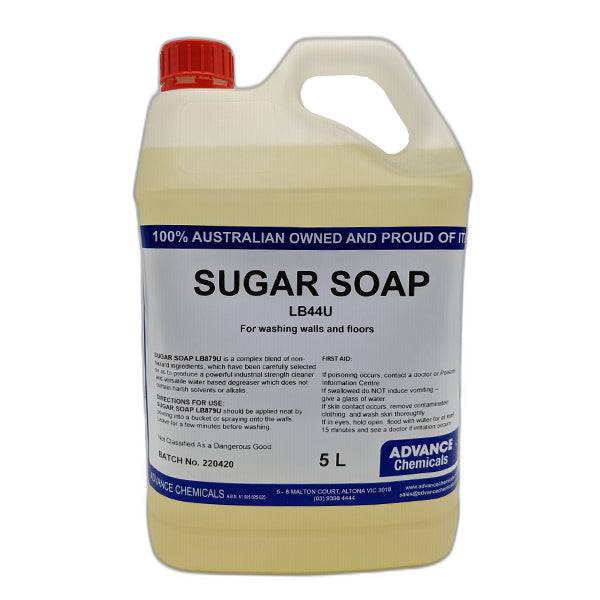
Item added to your cart



Sugar soap is a popular household cleaner used for wall preparation and grease removal, but it doesn't actually contain sugar. Its typical ingredients include alkaline salts like sodium carbonate, which acts as a degreaser, along with surfactants such as sodium lauryl ether sulfate to lift dirt and grime. Some formulations may also include other alkaline salts like sodium tripolyphosphate or sodium silicate. The name "sugar soap" comes from its dry, granular texture, which resembles sugar.
Sugar soap doesn't actually contain sugar, but is a powerful cleaning agent made with alkaline salts like sodium carbonate, surfactants such as sodium lauryl ether sulfate, and sometimes additional ingredients like builders (e.g., sodium tripolyphosphate) or abrasives (e.g., sodium silicate). These components work together to break down grease, lift dirt, and prepare surfaces for painting. The exact formula can vary depending on the brand and region.
Industrial Strength Sugar Soap is a complex blend of non-hazard ingredients, best to be used on walls to remove MOULD, FUNGUS, SMOKE, OIL, CRAYON DRAWINGS, FURNITURE LINE AND DIRTY HAND MARKS, SUGAR SOAP have been carefully selected so as to produce a powerful industrial strength cleaner and versatile water based degreaser which does not contain harsh solvents or alkalis.
Application: It can be use as neat by pouring into a bucket or spraying onto the walls. Or Dialute 1 in 10 parts of water.
The name "sugar soap" is a bit of a misnomer since it doesn’t actually contain sugar. It gets its name from the granular, sugar-like texture of the powder when it's dry.
Sugar soap is commonly used to clean walls and other surfaces before painting. It effectively removes grease and grime, ensuring a clean surface for better paint adhesion.
When handling sugar soap, especially in its dry form, it is recommended to wear protective gloves and eye protection due to its alkaline nature.